#indian antique
Explore tagged Tumblr posts
Text

At least once during the summer, ShriNathji wears clothes and jewels made of pearls from Basra, Iraq. Gifted at a time when pearls were just as expensive as diamonds, this summer Shringar is a delight to do a darshan of. A large garland of lotus provides a floral frame around ShriNathji.
9 notes
·
View notes
Photo
Smoking was / is / will always be addictive!

Lady under a tree, Bikaner 1760,
Mughal, opaque watercolor on paper
44 notes
·
View notes
Text

Dancing Ganesh, India, 9th-10th century AD
from The Walters Art Museum
351 notes
·
View notes
Text
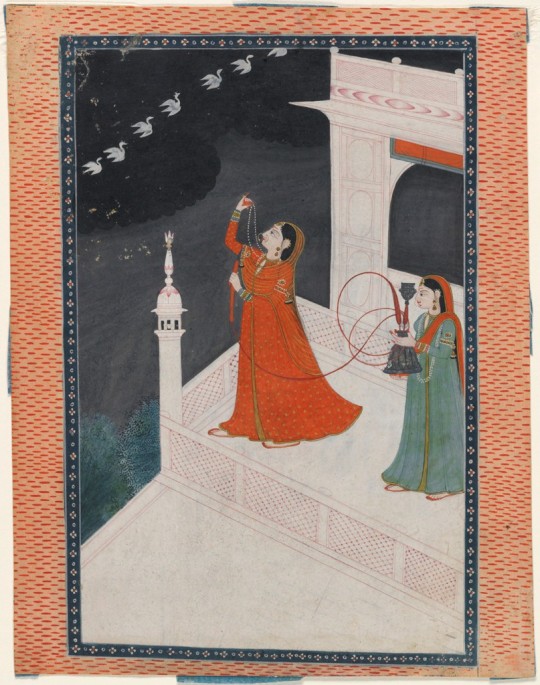
Female Courtier On a Rampart Smoking a Hookah, While Watching a Flight of Birds, early 1800s, India.
639 notes
·
View notes
Text
The cap on the Goswami on the left of ShriNathji tells us this is winter festival. Gherdar and pataka, along with a mugat and heavy shringar tells us this is a major festival of some sort. A mirrored frame is placed around ShriNathji and a pichoi of plantains and flowering bush is hung at the back.

Jai Shri Krishna 🙏
10 notes
·
View notes
Text
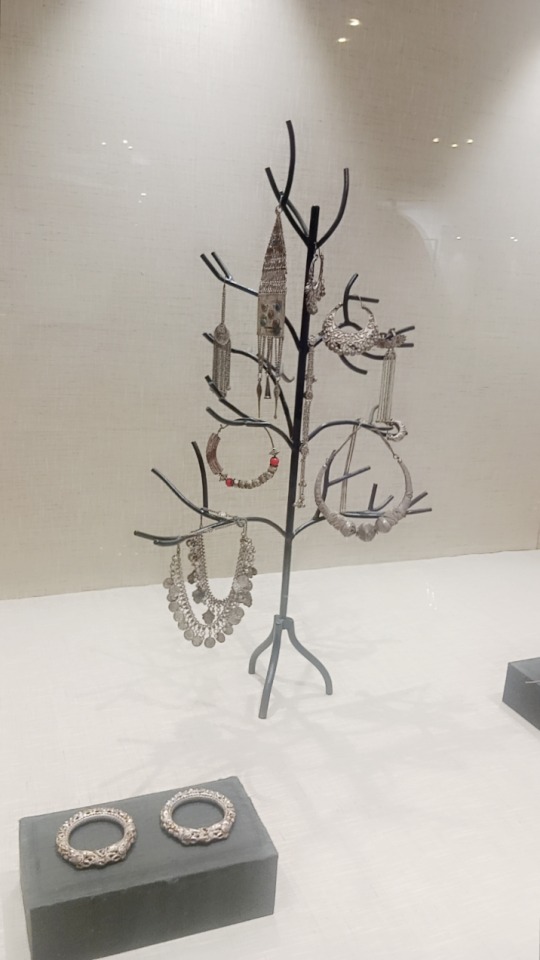

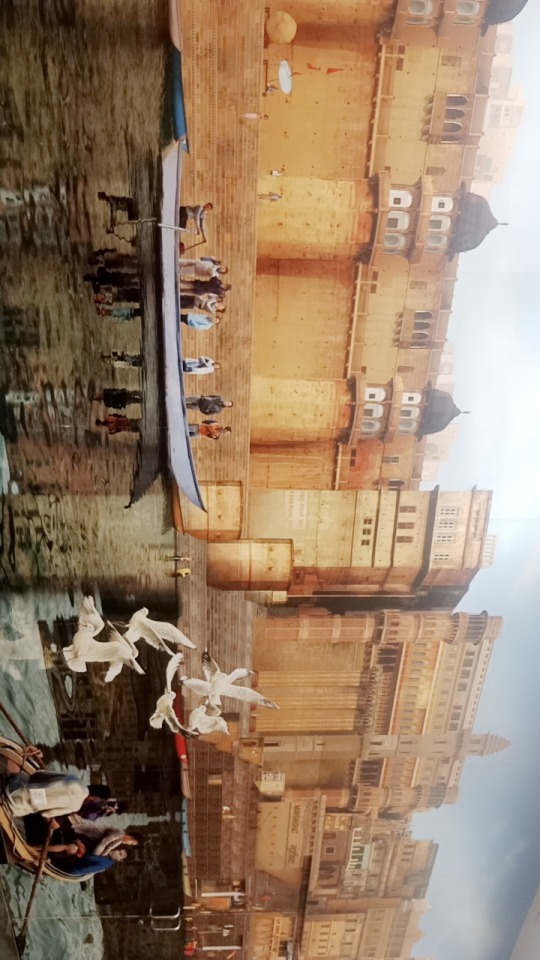
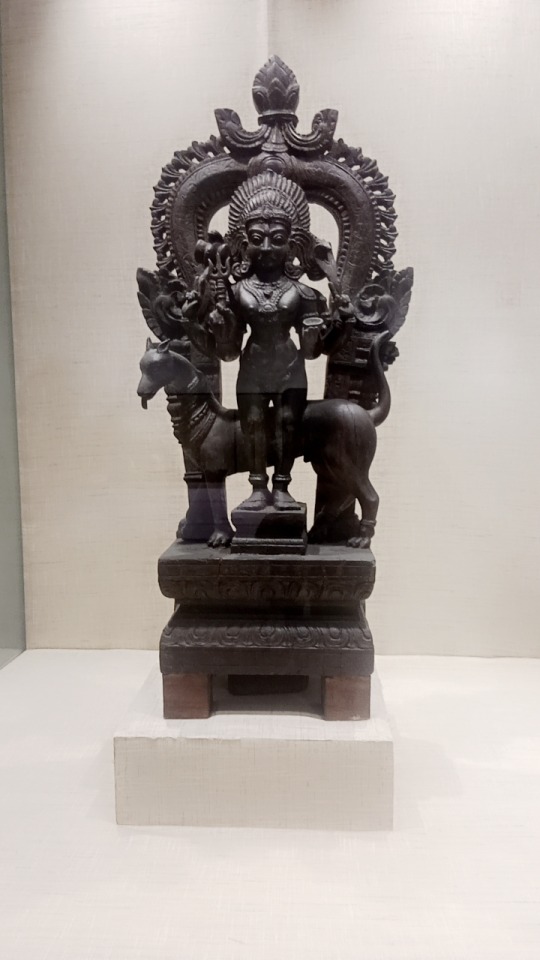
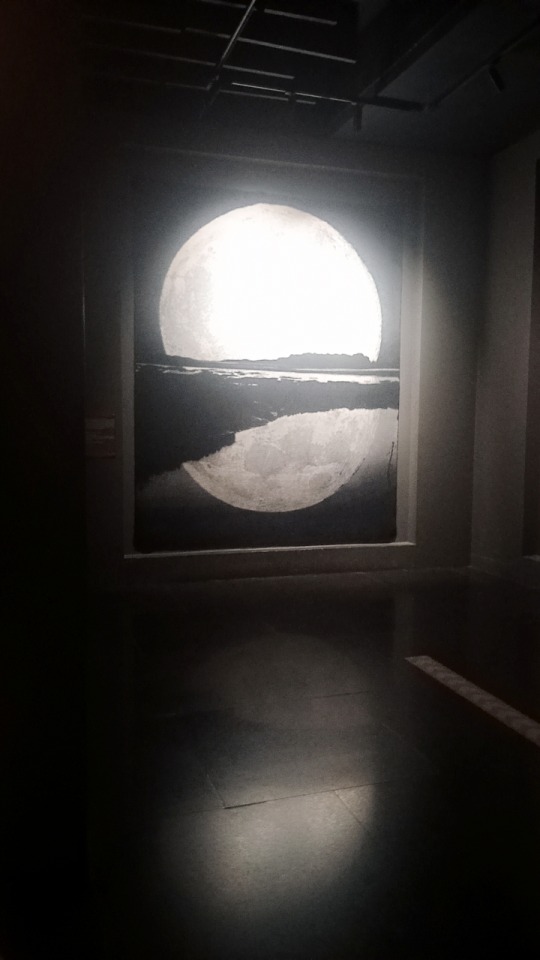
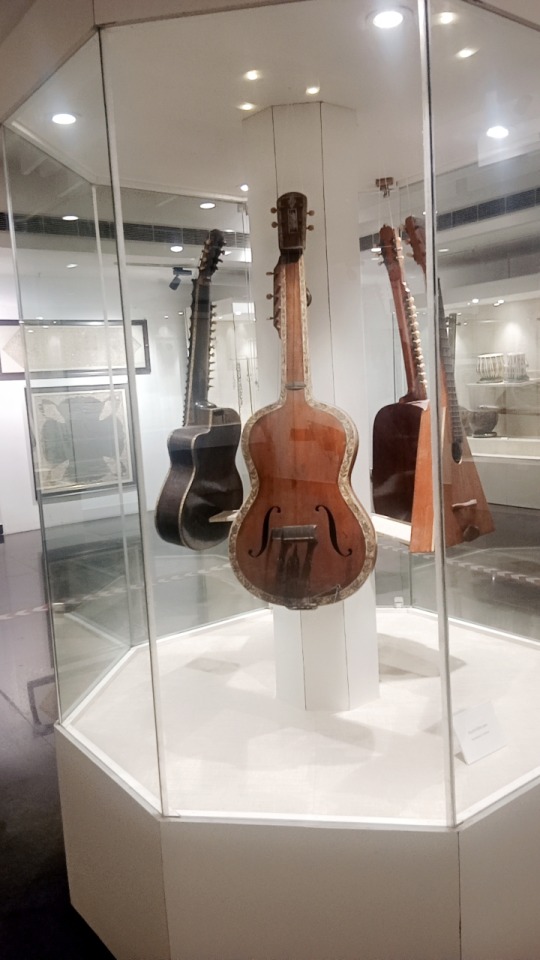

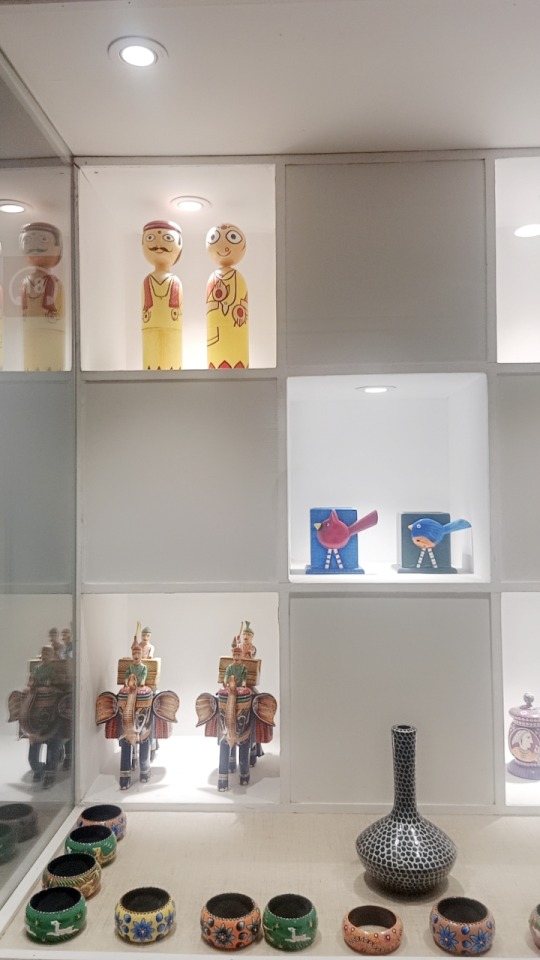

Museum tour - Essence of UTTAR PRADESH
#desiblr#uttarpradesh#hindublr#Varanasi#desi moodboard#indian heritage#hinduism#desi academia#indian culture#India#museum#antique#desi aesthetic#musical instruments#carpet#moon#guitar#mine
58 notes
·
View notes
Text
The World's Most Famous Diamonds

This remarkable collectors set is definitely the best curiosity we've had here at Butter Lane in a long time. The set consists of 15 replicas (cut to size) of the worlds most notable diamonds, made from crystal, with a perfectly fitted box and diamond booklet. In the set we have, The Shah (89ct), Pasha of Egypt (40ct), Orloff (200ct), Piggot (49ct), Polar Star (40ct), Sancy (55ct), Florentine (137ct), Grand Mogul (280ct), Kohinoor Old Cut (186ct), Nassak (81ct), Blue Diamond - Hope (45ct), Kohinoor New Cut (109ct), Jubilee (245ct), Regent (141ct) and finally the South Star (129ct).
One of my favourites, the Sancy Diamond, a fiery stone of Indian Origin. It's pear shaped, pale yellow in colour and weighs 55 carats! -Just about the size of a strawberry. This stone has been passed through many royal families, pawned and even stolen. My favourite (but gruesome) story about this stone dates back to King James I in 1605 when he bought the stone from Henri IV of France and his minister of finance, Seigneur Sancy. He became broke due to his highly expensive and fancy lifestyle, and the servant delivering the stone to King James was held up by thieves, in which he swallowed the stone. I must say, it must have been hard to swallow. However, the loyal servant was killed anyway and the stone was removed from his body (yuck).
Another stone, the Pasha of Egypt. It's considered the finest gem of Egyptian treasury, weighing in at 40 carats!! It's of octagonal shape and is of amazing cut, quality and colour. The whereabouts of this beautiful gem is unknown, rumour suggests it was purchased for over 28k by Ibrahim Pasha (1789-1848), viceroy of Egypt under Ottoman ruling. Fast forward to 1933, an Englishman put this stone up for sale and it eventually made it's way back to Egypt in possession of King Farouk. The worldwide known jewellers BVLGARI bought it off him and sold it to the "Poor Little Rich Girl" aka Barbara Hutton, in which she had the stone cut and set into a ring. The stone now weighs 36.22 carats and is privately owned in Europe.


The Shah diamond. Often described as the shape of a coffin, the cut of this stone is technically called a lasque cut; typical of Indian diamonds and it weighs in at a great 89 carats!! It takes it's name from the Nizam Shahi, a dynasty of rulers from the kingdom of Ahmadnagar, who ruled the state of Deccan in the middle-west part of India between 1490 and 1633. This rare stone would bear three inscriptions:
“Burhan Nizam Shah II in the year 1000” – about 1591
“Son of Jahangir, Shah Jahan, 1051” – about 1641
“Kadjar Fath Ali Shah” – Shah of Persia in 1824.
Since nothing will cut a diamond, but a diamond, some sort of diamond carving tool must have been used to engrave it, and the first inscription is the name of the ruler of Ahmadnagar. The second tells us that the stone was held by the Mogul Emperor Shah Jahan, grandson of Akbar, in 1641 And finally the third shows it was looted (along with the along with the Koh-i-Noor) by Nadir Shah, and was taken to Persia when his armies ransacked Delhi in 1739.
The Shah diamond’s next destination came about because of the assassination of the Russian diplomat, Alexander Griboyedov. He had a powerful influence among the rulers of Russia and played a role in the defeat of Shah Abbas Mizra (1789-1833), the viceroy of Azerbayjan. Griboyedov successfully negotiated the treaty of Turkmanchai with Persia, gaining valuable Russian territory, after their 1827 dispute.
Griboyedov was appointed the Minister of Persia and he soon returned to Tehran, even with his unpopularity in Persia. He was then killed by an angry mob who stormed the Russian legation on January 30, 1829 and the 89ct Shah Diamond was sent to Russia as an apology and as a gesture of appeasement to Czar Nicholas I. The gesture was successful and further warfare was stopped.
The Shah was made a part of the Russian crown jewels until the Bolshevik revolution of 1917. It disappeared for a short time and was rediscovered in 1922. The stone was then placed on display at the Russian Diamond Fund in the Kremlin, Moscow as one of the “Seven Historical Gems,” where it remains to this day.

#antique jewelry#butter lane antiques#antiquejewelry#fine jewelry#diamond history#diamonds#famous diamonds#world diamonds#shah diamond#sancy diamond#indian diamond#antique diamonds#famous jewellery#famous jewelry
21 notes
·
View notes
Text

Walking Buffalo of the Nakoda Nation. 1890s
#1890s#nakoda#indian#Vintage Photo#old photo#sealed in time#historical photo#history photo#photos#history#photography#black and white photography#vintage photography#black and white#black and white photo#history lovers#history in pictures#antique photo#timeless photo
18 notes
·
View notes
Text

6 notes
·
View notes
Text

In the summer, Thakorji wears thin clothes, floral garlands and minimum jewels to keep cool.
The pichoi at the back recreates the designs we see in Mughal and Rajput palaces. As this painting is from late 19th century, I would say the pichoi is probably a custom made 'net curtain' made in Europe (Scotland & Germany were popular places)
8 notes
·
View notes
Text

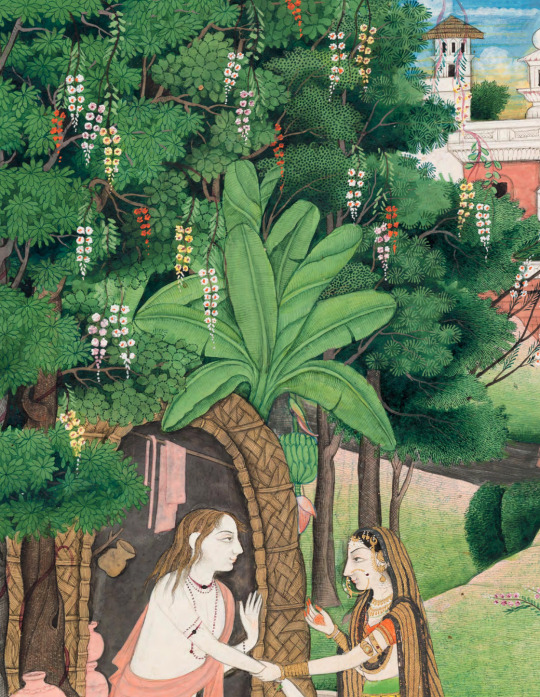
Princesse visitant un ascète, Inde (1820)
#asceticism#ascèse#Art#India#Inde#indian art#Simon Ray antiques#Simon Ray#Jermyn Street#King Street#London#Jermyn#Saint James
29 notes
·
View notes
Text
A fine Indian Mughal School
Watercolor in the manner of Swarup Singh
19th century

#Indian Mughal School#watercolor#the manner of Swarup Singh#19th century#painting art#art#original art#orientalism#artist painter#persian artist#indian painting#indian antique art#artists of color#pastel colors#water colour on l.#art colors#indian fine colors#international union for conservation of nature#beautiful nature#nature aesthetic#octopussi#salderi#xpuigc#xpuigc bloc
7 notes
·
View notes
Text

Vishnu and his consorts Lakshmi and Sarasvati, India or Bangladesh, 11th - 12th century
from The Metropolitan Museum of Art
131 notes
·
View notes
Text

Portrait of a woman, mid to late 1700s, Uttar Pradesh, India.
38 notes
·
View notes
Text

Enameled, Gold and Gem-Set Pendant In The Indian Taste by Falize, Paris, Circa 1880
Photo: Wartski
Source: forbes.com
#antique pendant#antique high jewelry#indian jewellery#indian high jewelry#enamel#gold#precious gems#high jewelry#luxury jewelry#fine jewelry#fine jewellery pieces#gemville
113 notes
·
View notes
Text
A DECCANI MINIATURE AT OLIVER FORGE & BRENDAN LYNCH

An Illustration to a Romance Written in Deccani Urdu, the Gulshan-i 'Ishq (Rose Garden of Love) by Nusrati, Court Poet to Sultan 'Ali Adil Shah II of Bijapur (r.1656-72 A.D.):
Angels descend from the heavens to visit a princess
Deccan, India, circa 1700-20
Opaque watercolour on paper heightened with gold and silver
Miniature: 22.3 by 14.4 cm.; 8 ¾ by 5 5/8 in.
Page 39.5 by 23.5 cm.; 15 ½ by 9 ¼ in.
“This painting was bought by an English collector, Mr. and Mrs. Jeremy Lloyd, one of seven offered at Christie’s in 1979,” explain the dealers. “In 2010 the Lloyds asked us to sell their collection and, via our Asia Week New York 2011 catalogue, we were able to establish not only the great significance of the manuscript from which the painting comes, but that of this particular painting.”
The unique design and palette of this evocative Deccan night-scene painting dramatically contrast the cascade of colour heralding the descent of the angels with the monochrome world of the cool, silent, moonlight-suffused palace. This is probably the finest page from what is unquestionably the finest Deccani manuscript of the period, outstanding for its calligraphy, its superb technical accomplishment and its poetical fantasy. The unpublished colophon (Christie’s, 1979) notes that the work was written by an unnamed author who ‘lived during the reign of ‘Ali ‘Adil Shahi, under whom I grew prosperous’. This would be ‘Ali ‘Adil Shah II of Bijapur (b. 1637) who ruled 1656-72 A.D., although there was no indication of a royal patron for the manuscript.
The painting was acquired by The Metropolitan Museum of Art, where it is currently on view in their Islamic Art galleries.
#Deccan, India, circa 1700-20
#Angels descend from the heavens to visit a princess
#OLIVER FORGE & BRENDAN LYNCH
#indian art #original art #antique art
#art #xpuigc
#Angels descend from the heavens to visit a princess#OLIVER FORGE & BRENDAN LYNCH#Deccan India circa 1700-20#indian art#original art#antique art#art#xpuigc
7 notes
·
View notes